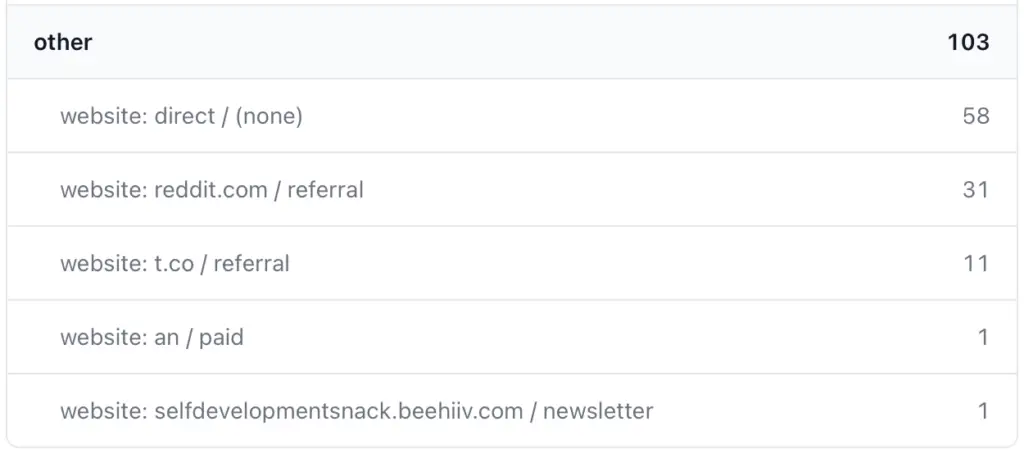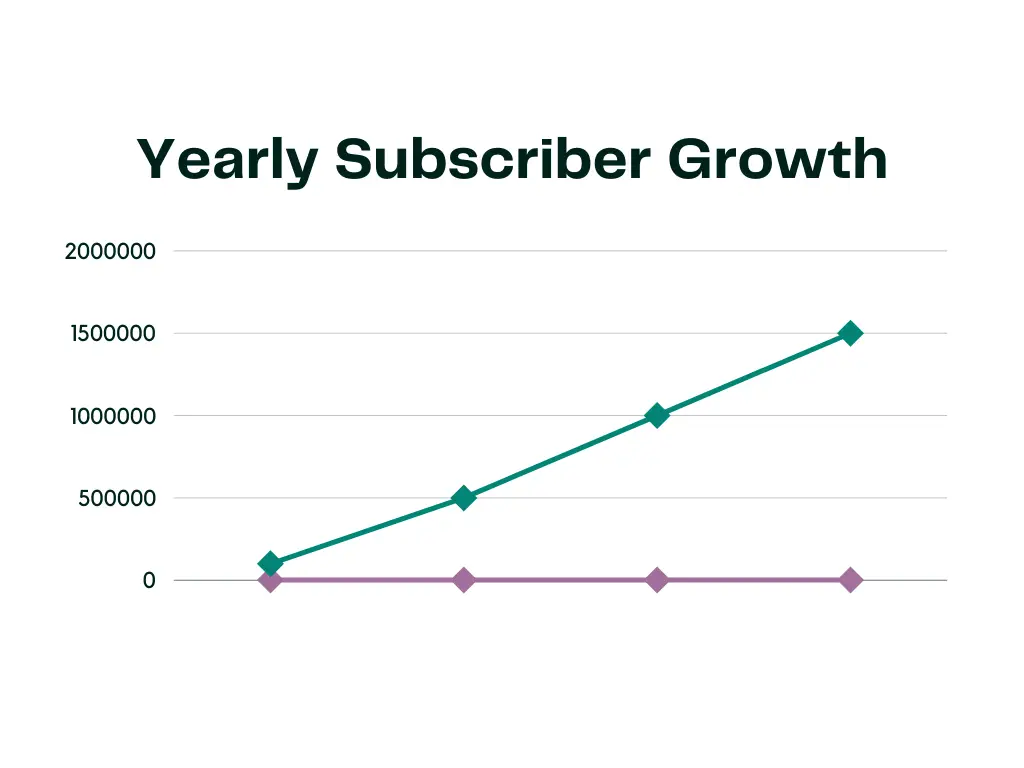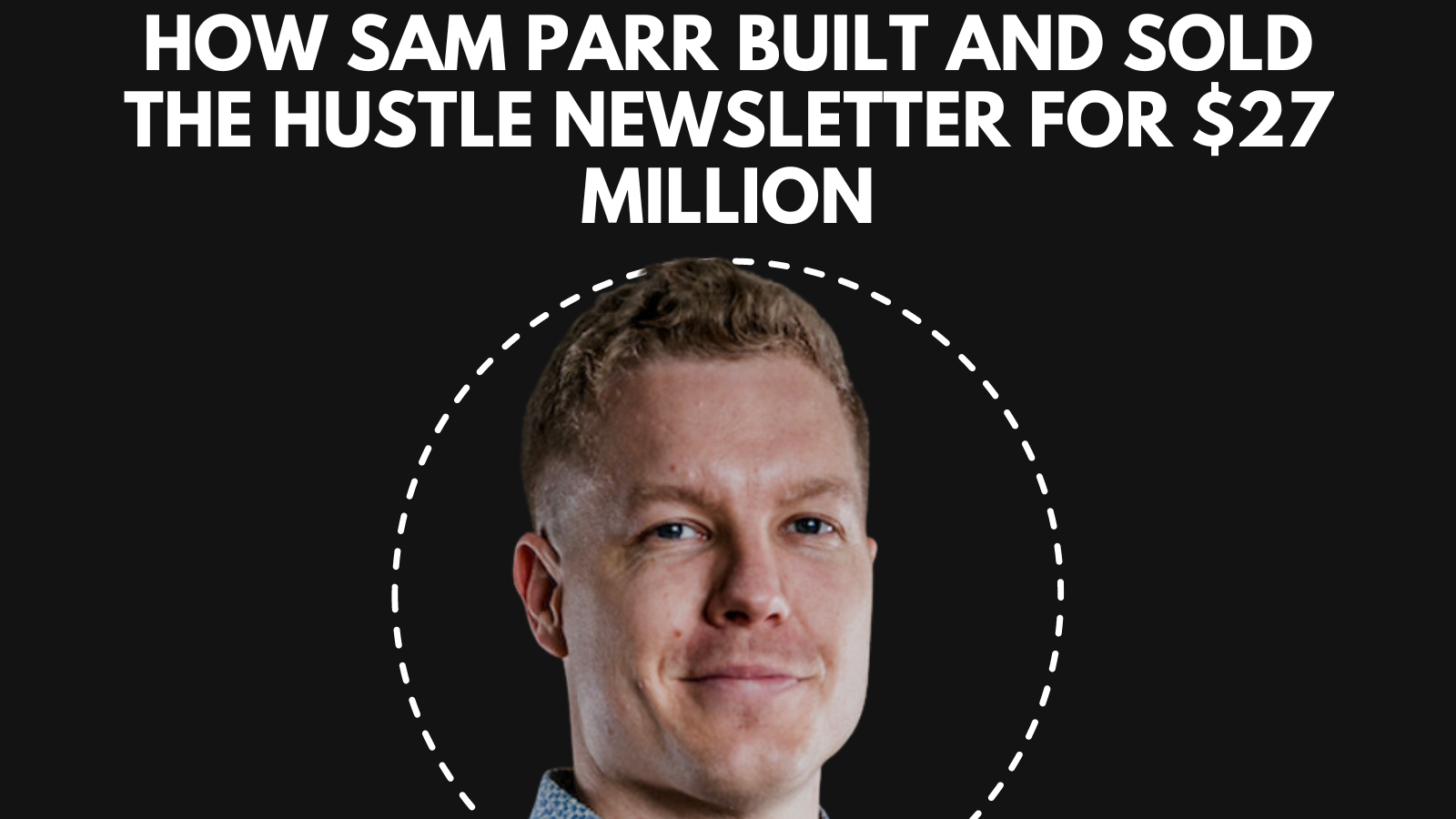The growth of newsletter businesses is one of my all-time favorite topics. That said, it’s not egregious to say that Sam Parr is one of my favorite people in business.
I have two of my newsletters so I spend hours researching and trying to find new ways to grow my subscribers.
Since Sam is one of the most influential people in the space, I always find myself watching his interviews, reading his articles, and following his advice.
So, to help you guys out, I decided to put together a case study of exactly how Sam Parr grew his newsletter, The Hustle, and eventually sold it for a whopping 27 million dollars.
Before we get started, if you don’t want to miss another case study like this one, consider subscribing to my newsletter “income stream ideas”. We cover income stream case studies, interviews, business news, and more.
Let’s Start With Sams’s Background
Parr was born and raised in Missouri, but his entrepreneurial journey started when he was in College (attending Belmont University in Tennessee). His first business was a hot dog stand called Southern Sams (which brought him anywhere between $200-$1000 in a single day).
On top of that, he also started an online liquor store which made some good money as well.
This was all until he decided to make the move to San Francisco. Once he decided to make the move, he ditched both the hot dog stand and the liquor store.
Once in San Francisco, Sam ended up becoming co-founder of an app called Bunk, which was an app that matched roommates together. After about a year, they ended up selling the company and Sam got paid $15,000 along with a pretty good salary for the next year.
The salary was a 366-day contract, so once it ended, Sam had some time to think about what he wanted to do next. That’s where The Hustle was born. But not The Hustle (the newsletter).
How The Hustle Started Originally
Before it became what it was known for (the newsletter), The Hustle was Hustle Con, which was a conference created for people to learn from successful founders of different start-ups.
However, Sam realized how hard it was to scale something like Hustle Con. With this challenge in mind, he had to find a way to scale the business even further. That’s when the idea of creating a daily newsletter came about.
Inspired by The Skimm, Sam turned Hustle Con into the Hustle Newsletter on May 1, 2016. The rest is history. In the first year, The Hustle Newsletter took off to 100,000 subscribers in it’s first year.
As you can tell from the title, The Hustle went on to have over 1,000,000 subscribers and was sold for $27,000,000 dollars.
However, within this time frame, many different things went into the growth of The Hustle. Within the rest of this article, we’re going to talk about how he grew the hustle, how he monetized it, and the story of The Hustle being sold.
The Growth Strategies Of The Hustle
There’s something about growth strategies that makes me excited. Maybe it’s because I love seeing a well-executed plan come to fruition or maybe it’s the thrill of taking a risk and seeing it pay off.
Either way, The Hustle used some pretty interesting strategies to grow their newsletter to over 1 million subscribers. Let’s go over each one.
Growth Strategy #1: Reddit
Sam figured out how to leverage one of the biggest social media platforms of our time, Reddit. This is exactly how he did it. He would go on subreddits that were related to his audience and look through each one.
He would find interesting comments and those comments sparked ideas for his writing.
For example, a lot of times the comments will spark a debate, and the answer is often left in the air. Sam, or his writers, would then do thorough research and answer that question in a complete article.
He would then share that article on that same subreddit and related ones, and some of them would go viral.
This is where the email collection process began. Sam had an excellent e-mail pop-up for the thousands of visitors he would get on the site, and a good amount would sign up.
Here’s an example of this process.

There’s a lot of debate within the comments of this thread. I could simply use the question and write an article, “8 legitimate businesses you could start with AI that isn’t a scam.”.
Post a preview on the subreddit going over a few but then add a link to the full article, and there’s a good chance you could get good traffic.
The key is to make sure you don’t post links in a subreddit that doesn’t allow them.
The example that Sam gave in his interview on the Hubspot YouTube channel was a post on a gym subreddit, where the person who posted the original post had posted their outdoor gym. There were a bunch of comments regarding stain-resistant workout equipment that went unanswered.
Sam then, on the spot, came up with the article, “Stain Resistant Workout Equipment”. He said that this article would have a high chance of going viral in this subreddit because it’s a proven interest of the community.
On top of Sam’s comment strategy, you could also filter the subreddit to top all-time.
Why Is This Reddit Strategy a Good One?
With a strategy like Sams, you could get tons of traffic and newsletter subs without having to post thousands of articles to get traffic from Google.
Growth Strategy #2: Utilize Personal Networks for Content and Distribution
This is a hack I use for my site and newsletter. Don’t shy away from talking to people and publishing content around them. When you do this, you’re not only sharing content for your audience but there’s a chance that you’re going to get mentioned by them for putting the content together.
Sam did this with Airbnb. He interviewed the founder of Airbnb and they shared the interview with their network which resulted in a ton of traffic to his blog (along with subscribers).
Here’s proof of this strategy working with my newsletter. It wasn’t Airbnb, however, I did a case study interview for someone and tweeted that it would be coming out in my newsletter. He then shared it and it resulted in 11 subscribers from X.

If you utilize this strategy at volume, the subscribers will add up quickly.
Growth Strategy #3: A Solid Referral Program
A solid referral program is extremely important. They say that word of mouth is probably the best form of advertising. So what did The Hustle referral program consist of? Here’s the email Sam used to get people to refer them to others.
Wtf is this??
It’s simple. We give you access to our private online community, give you free tickets to Hustle Con, and send you free swag.
How’s this thing work?
This is your unique referral link:
(Link)
Share it and get your friends to join The Hustle’s newsletter. When someone signs up, you’ll get free stuff.
You need to collect:
- 4 emails to get access to our private community with special content
- 25 to get a custom Hustle shirt
- 100 for a Hustlin’ hoodie
- 5,000 emails and we’ll fly you to San Francisco to hang out with our team.
After you hit each barrier you’ll get an email from me, the founder and CEO of The Hustle.
To check how many emails you collected, visit our ambassador home page and enter your email address. Sound good?
Respond to this email if you have any questions and we’ll take care of you.
When putting together your own referral program, just make sure you
- make it simple and easy to understand
- offer incentives that align with your brand and values
- keep track of referrals and rewards efficiently
- always be responsive to questions or concerns from ambassadors
Growth Strategy #4: Cross Promotion
Cross-promotion is a great way to grow as well.
All you have to do is link up with another newsletter with a similar audience and have them post you, and vice versa.
Cross-promotion has become much easier with platforms like Beehiiv, as you could recommend other newsletters and make money doing it in the process. On the growth side of things, you could put up some money and have other newsletters recommend you every single time someone signs up for their newsletter.
However, if you and another newsletter want to simply just recommend one another without money involved, you could do that as well.
When it comes to cross-promotion, make sure the newsletter you’re working with has the same type of audience. The last thing you’d want is 1000 subscribers with a 30% open rate.
Growth Strategy #5: Paid Ads
Sam paid for ads on Facebook, Linkedin, and lastly on other newsletters as well. Once you get big enough and get the ball rolling, you could take some of those profits and invest them in paid ads.
The key to paid ads is to advertise where your audience is hanging out.
For The Hustle, Sam found that Facebook, Linkedin, and other newsletters were great investment opportunities when it came to running paid ads. But this may not be the same for every brand or business.
From personal experience, it’s also important to test many different ad variations to find one that works best. This will significantly lessen the amount of money spent on ads and increase the return on investment over time.

How The Hustle Newsletter Was Monetized
If you can’t monetize your subscribers, you should rethink putting all your time and energy into growing a newsletter.
Here’s a quick way to assess if you could monetize a newsletter or not:
- Is your audience audience companies would want to advertise to?
- Is your audience an audience that would spend money on your products?
- Are there even products or services that your audience would be interested in?
Those are all things you need to keep in mind before you launch an email list or a newsletter.
Now, let’s get back to Sam. How exactly did he monetize The Hustle? Let’s dive into the methods.
Advertising & Sponsorships
The Hustle primarily monetized through advertising and sponsorships. They would sell ad space in their newsletters to companies with products or services that would appeal to The Hustle’s audience.
This should be the way most newsletters monetize, especially in the early stages.
Because The Hustle was primarily a news site, the angle of selling courses or things of that nature probably wouldn’t have worked as well.
However, if you’re someone who has a personal brand tied to your newsletter, this may be a viable option for you.
So you may be wondering about some strategies to monetize your newsletter through advertising and sponsorships. The thing is, there’s no easy way to do this. Here’s what you could do:
- Become so big that companies can’t ignore you.
- Have a method of reaching out to companies and selling your ad space specifically.
- Utilize Sparklook, which is a page you could create detailing the stats of your newsletter and what your sponsorships/ads cost.
Parr specifically, got his first sponsors from companies that he worked with directly within Hustle Con and the newsletter. This goes back to the idea above that you should utilize your network & work at growing your network.
Sam actually shared the image of his first sponsor email on X. Here’s it is.

Premium Membership: Trends.Co
It didn’t compare to the ad & sponsorship revenue, but they added a premium membership option called trends.co. It’s a subscription service that recognizes trends in business and gives you analytics, and insights into where these trends are going.
Hubspot bought this alongside the Hustle’s newsletter. Here’s a tweet of Sam talking about Trends.

Why Did Hubspot Purchase The Hustle For $27 Million?
HubSpot’s acquisition of The Hustle for $27 million had been driven by a strategic desire to expand its content offerings and reach a broader audience, particularly entrepreneurs, founders, and tech startups. This move aligned with HubSpot’s recognition of the changing landscape in B2B marketing and the increasing importance of diverse media formats such as newsletters, podcasts, and premium content in engaging with audiences.
Biggest Lessons and Takeaways From Sam’s Journey
Here are the most valuable lessons and takeaways from Sam’s journey that aspiring entrepreneurs can learn from:
Be Unique
When most people were going the long SEO route, Sam pivoted and identified a Reddit strategy that helped him “cut the line” and gain significant traction for his newsletter. He differentiated himself by finding a unique angle that resonated with his target audience.
Utilize your Network
Sam’s network helped him in more than one way. From growth to monetization and eventually the acquisition by HubSpot, Sam’s network played a crucial role. With growth, he utilized other people’s audiences for growth. For monetization, he was able to get sponsors based on the founders he’d worked with.
Build a Community Not Just An Audience
The Hustle had a huge referral program because of the fact that Sam had built a community with his newsletter. People were emotionally invested in the brand and wanted to share it with others. This led to exponential growth and engagement.
You Need To Take Action Early
Parr’s success with The Hustle and think it was an overnight phenomenon, but that couldn’t be further from the truth. Taking action early in the entrepreneurial journey is a critical lesson from his story. Sam’s initial ventures, from a hot dog stand to an online liquor store and then a roommate-matching app, highlight a trajectory filled with experimentation, learning, and pivoting.
It also proves that no path that you take is pointless. Even if you end up not pursuing that path in the long run, the experiences and lessons learned are invaluable and can be applied to future endeavors. Each of Sam’s ventures taught him something new about business, customer needs, marketing, and more.
Always Be Open to Switching Things Up To Make Things More Scalable
Conferences can make good money, and Hustle Con was actually profitable, however, Sam realized that the newsletter aspect of his business had a much higher potential for scalability and reach. This realization led him to pivot from focusing primarily on Hustle Con to expanding The Hustle newsletter. Don’t be open to quitting, but always be open to pivoting. Just make sure that you observe every angle.
Word Of Mouth Is One The Best Marketing Tools
Whatever business you decide to work on, try and find a way to increase word of mouth marketing. Sams use of a referral program for The Hustle is a prime example of leveraging word-of-mouth in a digital age. By incentivizing subscribers to share the newsletter with others, he not only increased his subscriber base but also ensured that new subscribers came with a built-in trust for The Hustle, having been recommended by someone they already know. The Hustle grew 300k subs from the referral program. That’s 1/5th of their total subscriber list.
Don’t Be Afraid To Spark Some Controversy
Sam used a method on Reddit that helped him find controversial topics. He then took those topics, that went unanswered on Reddit and either wrote them, or had a writer write them. These were the articles that went the most viral. If applicable to your business, consider embracing controversy as a strategy to engage and grow your audience. This approach, however, should be navigated with care and responsibility.
Keep Building Even After a Big Win
Although Sam sold The Hustle for 27 mill, he continues to push. He now is co-host of My First Million podcast, founder of The Hamption which is a highly vetted membership community for entrepreneurs, founders and CEOs, and more.
Sources:

